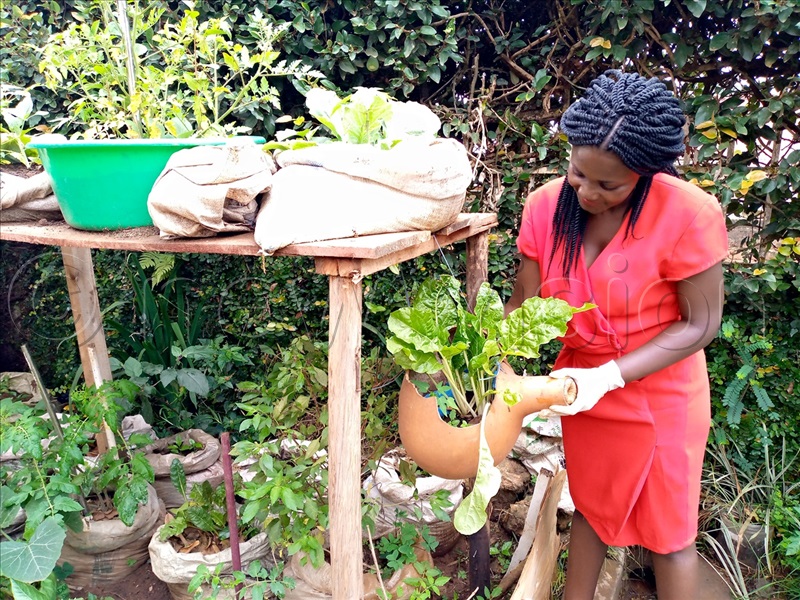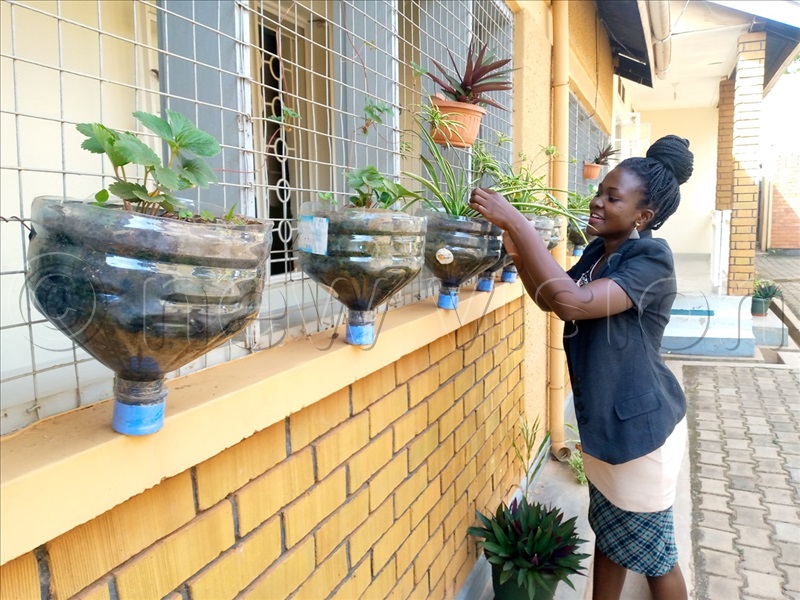By Umar Nsubuga
Many people may deprive their families of enjoying home-grown vegetables claiming not to have enough space where to plant them yet the compound is full of flowers alone.
“One can easily plant flowers with vegetables and yet be with a nice-looking compound. It could even look neater with vegetables than when it has only flowers,” says Martha Kisekka who practices intercropping of flowers and vegetables.

She says instead of buying not very fresh vegetables from the market, one should plant some vegetables in the compound, as is the case with flowers.
Flowers like nasturtium commonly known as Anasitanziya in Luganda can easily co-exist with vegetables like spinaches and ddoodo (amaranthas) and make a good-looking compound.
“Not all flowers are dangerous to human health as most people think, plant a species of vegetable in one hole, leave a space then plant a flower,” Kisekka noted.
Kisekka says, “Selection of vegetables to plant, say on the verandah, also matters a lot in making it look smart. Don’t select only dull colours. Mix them with brighter ones”.

Vegetables that can look good are ddoodo, nnakati and spinach.
Sacks also work
With sacks as gardens, plants seem confined, but this is good as less time will be spent cleaning after fallen leaves. And when the same foliage is collected, it can be reapplied as part of manure when they rot.
Depending on what plants one wants, the soil can be half the sack or full. For crops like cassava, potatoes and tomatoes that can be harvested in intervals and have tap roots, full sacks would be the best while for vegetables like cabbages, and spinach that have shallow roots, half-soil sacks are the best.
Sack gardens are friendly as they do not cost much in maintenance.
They store enough water so there are less worries about watering.
They can be placed anywhere even if one has limited space at home, although they would better be placed in the backyard where plants can easily access light.
They also require that the soil is softened so that it does not solidify to suffocate plant roots, by turning the soil once in a while most especially before the next planting.





